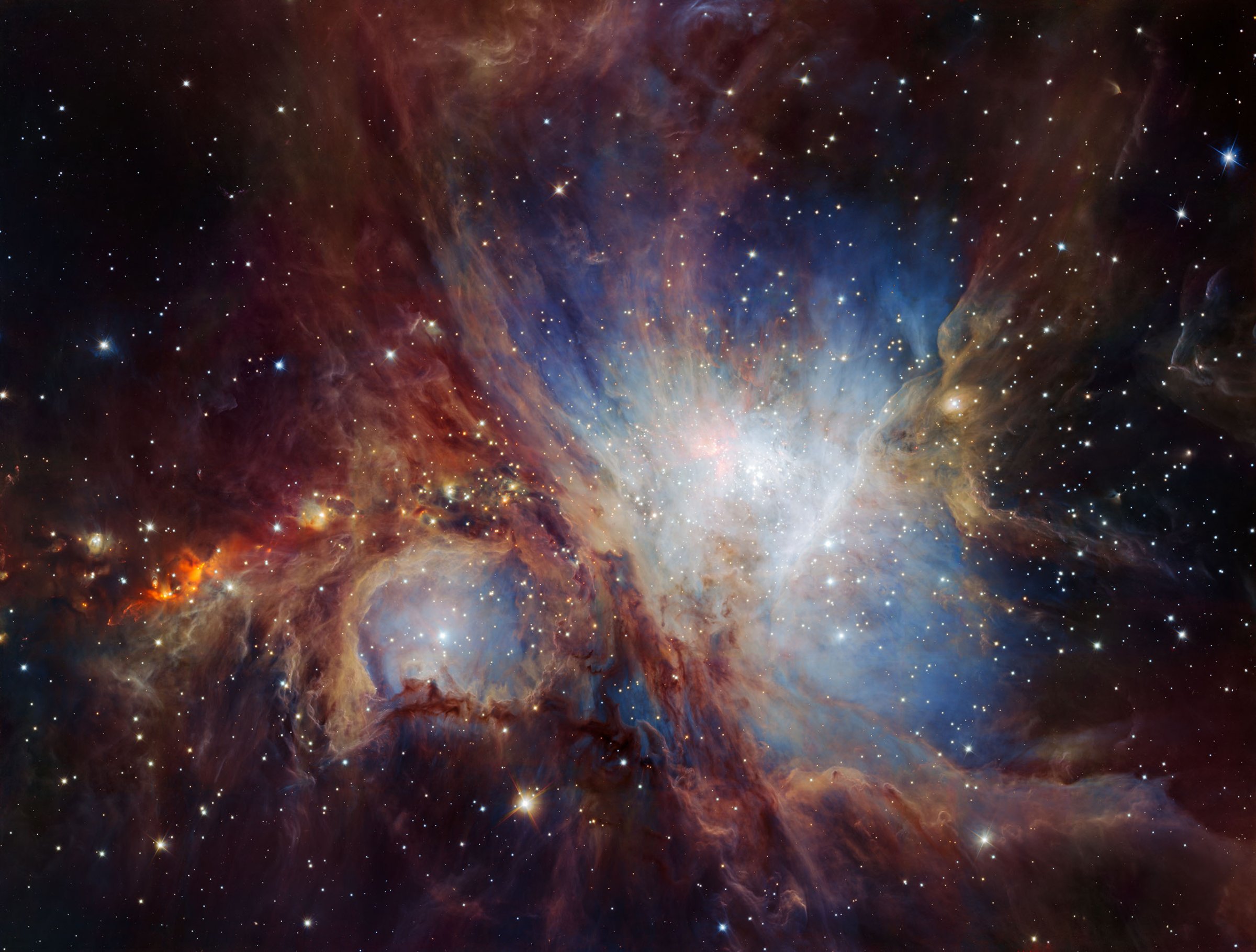
If you’ve ever seen a faint glowing patch in the “sword” of the constellation of Orion, that’s the Orion Nebula. It’s visible to the naked eye here on Earth because it is so strongly illuminated by ultraviolet radiation and brightly glowing ionized gas.
A new view of the nebula, taken in infrared by the Very Large Telescope in Chile, is the deepest and most comprehensive so far. Researchers were excited to see an unexpected — and previously unknown — wealth of very-low-mass-objects, which are smaller sun-like bodies.
“Understanding how many low-mass objects are found in the Orion Nebula is very important to constrain current theories of star formation,” explains Amelia Bayo, co-author of a new paper on the discovery. “We now realize that the way these very low-mass objects form depends on their environment.”
In the future, the European Extremely Large Telescope (E-ELT), scheduled to begin observing in 2024, might be able to observe planet-sized objects in the nebula, something our current technology lacks the ability to do. Lead scientist Holger Drass hopes that, “we will discover a wealth of smaller Earth-sized planets with the E-ELT.”
More Must-Reads From TIME
- The 100 Most Influential People of 2024
- Coco Gauff Is Playing for Herself Now
- Scenes From Pro-Palestinian Encampments Across U.S. Universities
- 6 Compliments That Land Every Time
- If You're Dating Right Now , You're Brave: Column
- The AI That Could Heal a Divided Internet
- Fallout Is a Brilliant Model for the Future of Video Game Adaptations
- Want Weekly Recs on What to Watch, Read, and More? Sign Up for Worth Your Time
Contact us at letters@time.com